Hasta, in Sanskrit stands for palm or arm poses. And Mudra (seal or sign) is defined as a bodily posture or a symbolic gesture. These Hasta Mudras are often used in the Indian classical dances to depict different creatures, their activities, the nature, different objects and to narrate the situations etc. They are also used to convey various emotions, ideas, and concepts through the movement of the hands and fingers. Both Hand Mudras (or hand gestures) in Indian Classical Dancing is called “Sanyukta Hastra Mudras”.
In Kathak, since the purpose of this dance form is to tell the audience a story, hand gestures (hasta mudra) are the most significant aspect of Kathak dance. Kathak hasta mudras facilitate storytelling and along with facial expressions, they make the tale easier to understand. Here Gauri Jog explains about Both Hand Mudras.
Anjali (ahn-gel-ee)

The palms are kept open and two hands are joined with the fingers and thumb extended and held close together. Fingers of both hands touch each other face to face. Used to express a salute to God, teacher or Brahma, this Mudra can be performed in front of head, face or chest.
Kapota (kah-poe-tah)

In this hasta mudra, the palms of the two hands are slightly hallowed facing toward oneself and arc joined at the side and the top. The little fingers touch along their sides. All fingers are extended and slightly bent. Used to express Namaskar, to show respect to the teacher and elders, humbleness
Karkatt (kar-ka-ta)

The fingers of the two hands are clasped with each other and the hands are kept with the knuckles facing outwards. Used to express arrival of group, stoutness, blowing the shell, stretching the limbs, bending the branch of a tree
Swastika (Swa-sti-ka)
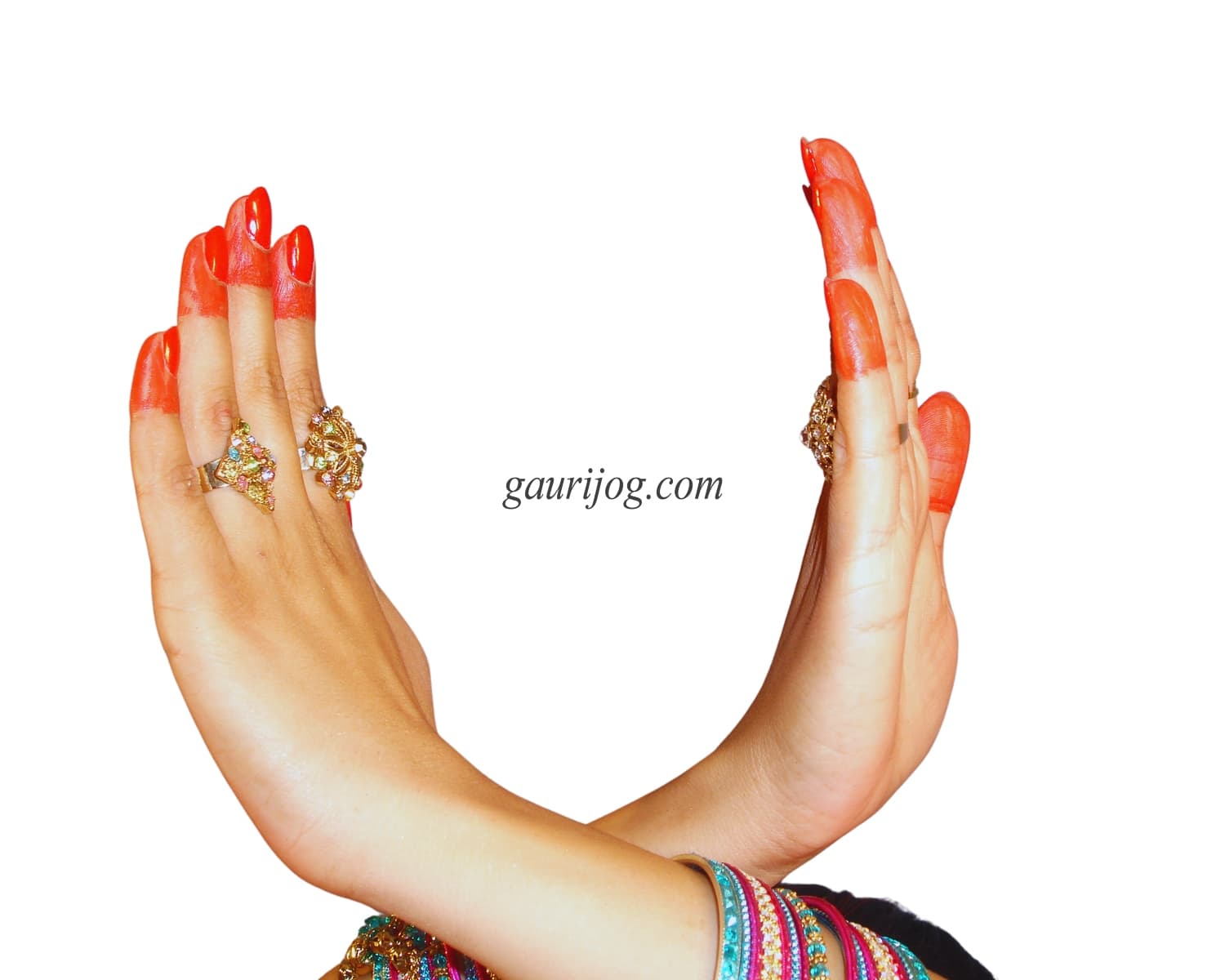
Two Pataka hands are crossed at the wrists where the bases of the palms touch and the left hand is placed above the right i.e. the right hand with fingers and thumb stretched are held close together pointing upwards….continued on next slide
Karkatt (kar-ka-ta)

The fingers of the two hands are clasped with each other and the hands are kept with the knuckles facing outwards. Used to express arrival of group, stoutness, blowing the shell, stretching the limbs, bending the branch of a tree
Swastika (Swa-sti-ka)

Two Pataka hands are crossed at the wrists where the bases of the palms touch and the left hand is placed above the right i.e. the right hand with fingers and thumb stretched are held close together pointing upwards and the left hand with fingers and thumb in the same way also pointing up and crossed at the wrists with the left hand on the right hand. Used to express crocodile, alligator, to talk in fear, to argue
Dola (Dolah)

In this hasta mudra, two Patakas are used in this. That is the hand with the fingers and thumbs stretched are placed with the back of the palms resting on the thighs. The right hand is placed on the right thigh and left on the left thigh. This Mudra is used in the beginning of the dance performance
Puspaputa (poosh-pah-pu-tah)

The palms are hallowed slightly and face one another, fingers and thumb close together, and slightly bent at the top, the finger tips and bases of the palm in each hand are placed to touch each other. Used to express Arati, water, offering a light, accepting a fruit, offering to the sun in the evening and to chant holy prayers
Utsang (Ut-sangh)

The palm is raised facing outwards and three fingers are bent towards the palms and the thumb is bent slightly backwards. In this case, the hands are held to touch the opposite shoulders at the fingertips. The little finger is extended in both the hands. Used to express hug, shyness, happiness, teaching the children
Shivling (Shi-va-lingha)
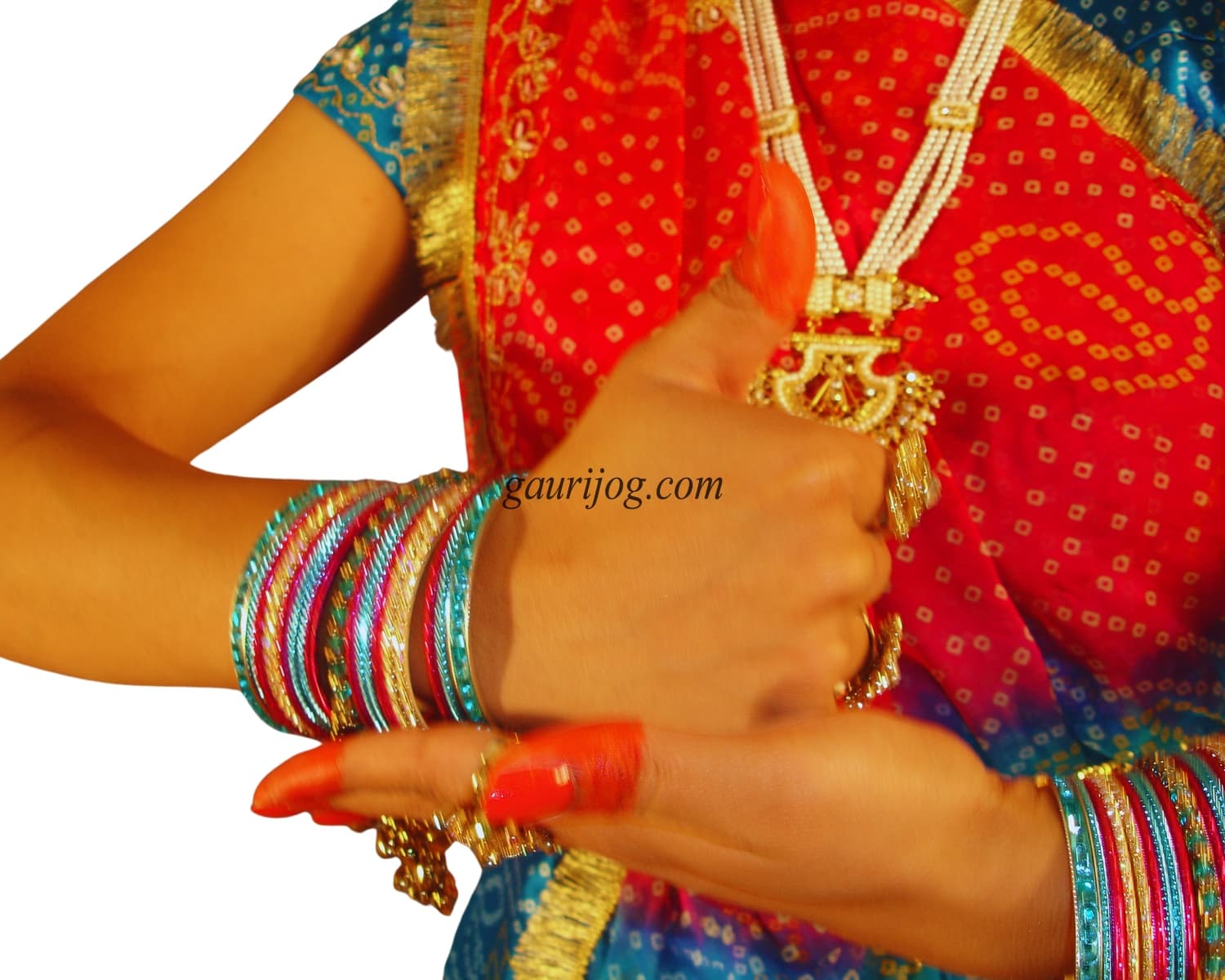
Here is a combination of the Ardhachandra with the left hand and Shikhara with the right hand. Used to express Shiva-ling.
Katakavardhan(Kah-tah-ka,var-dha--nah)
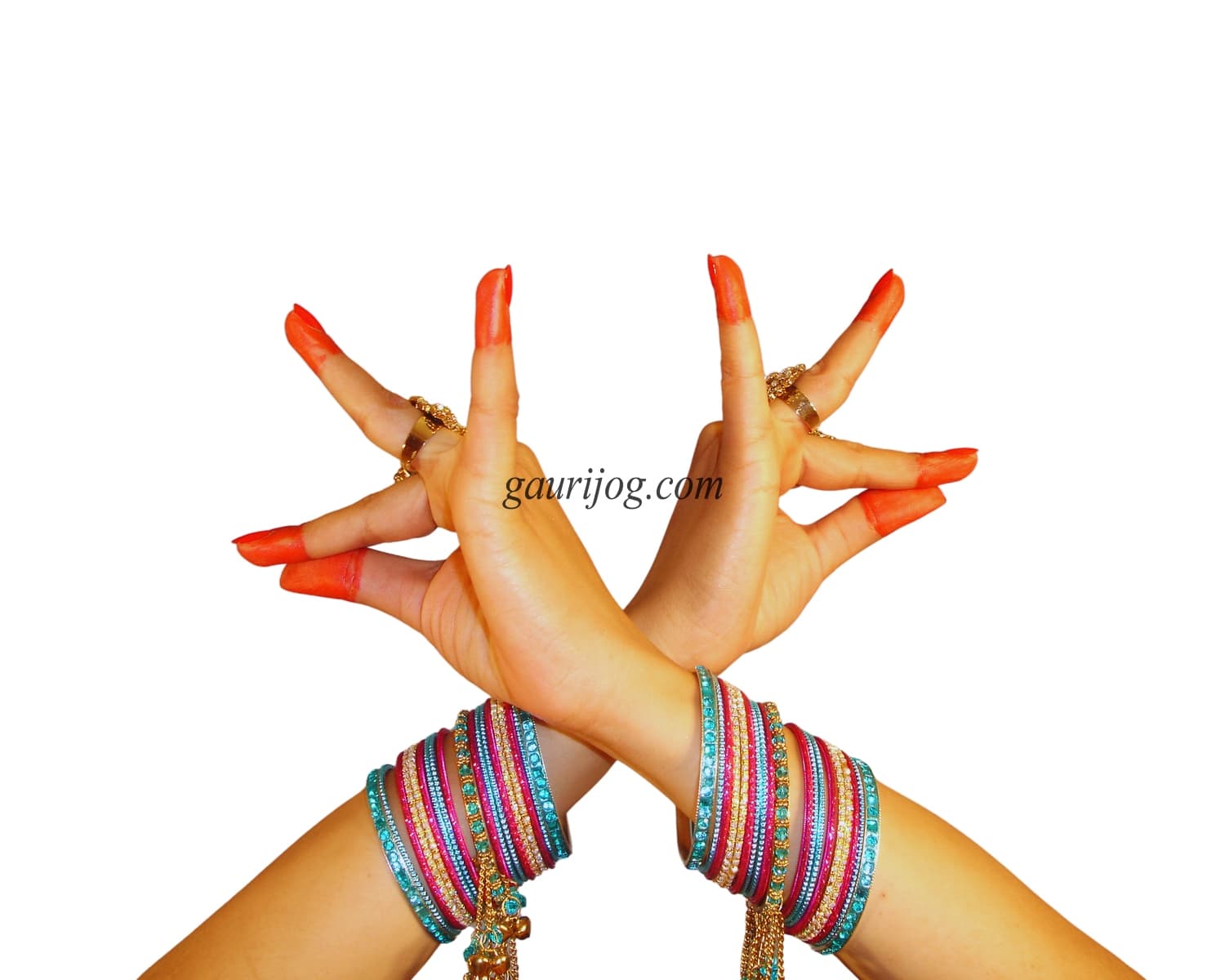
The palms are raised outward and extend and bent to touch the base of the thumb. The 2nd finger and thumbs are curved forward to touch the tips. The 1st finger is also curved forward parallel to the 2nd finger. The hands are crossed at the wrists with the hands slightly thrown back and facing in the opposite direction. This is used to express marriage, coronation, worship
KartariSwastik (Kar-tar-E-sva-sti-ka)
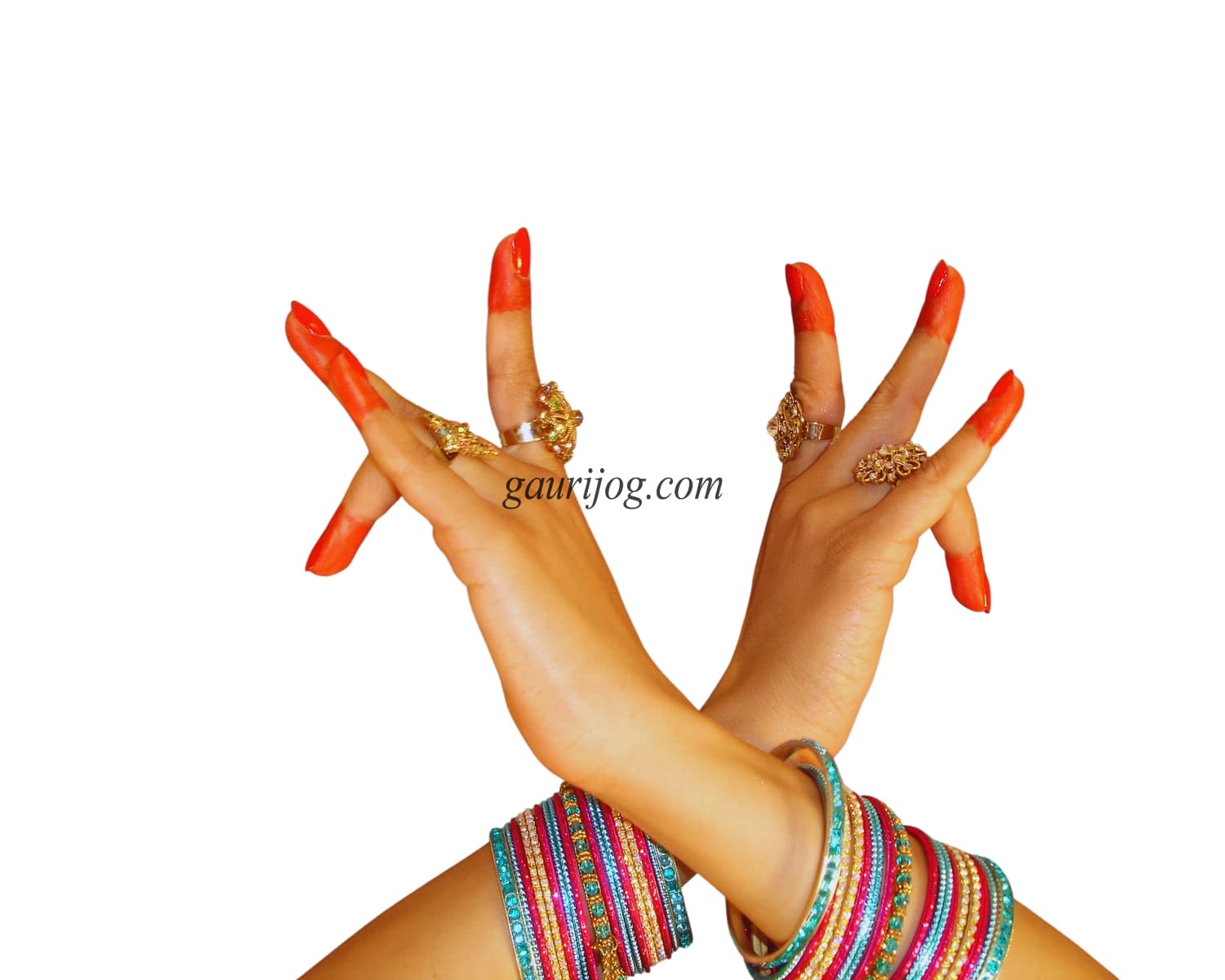
In this mudra, there is combined use of the Kartari Mukha hands. The hands are crossed raising palms facing outwards. This is used to show branches of a tree, summit of a mountains and trees
Shakat (shah-kah-tah)
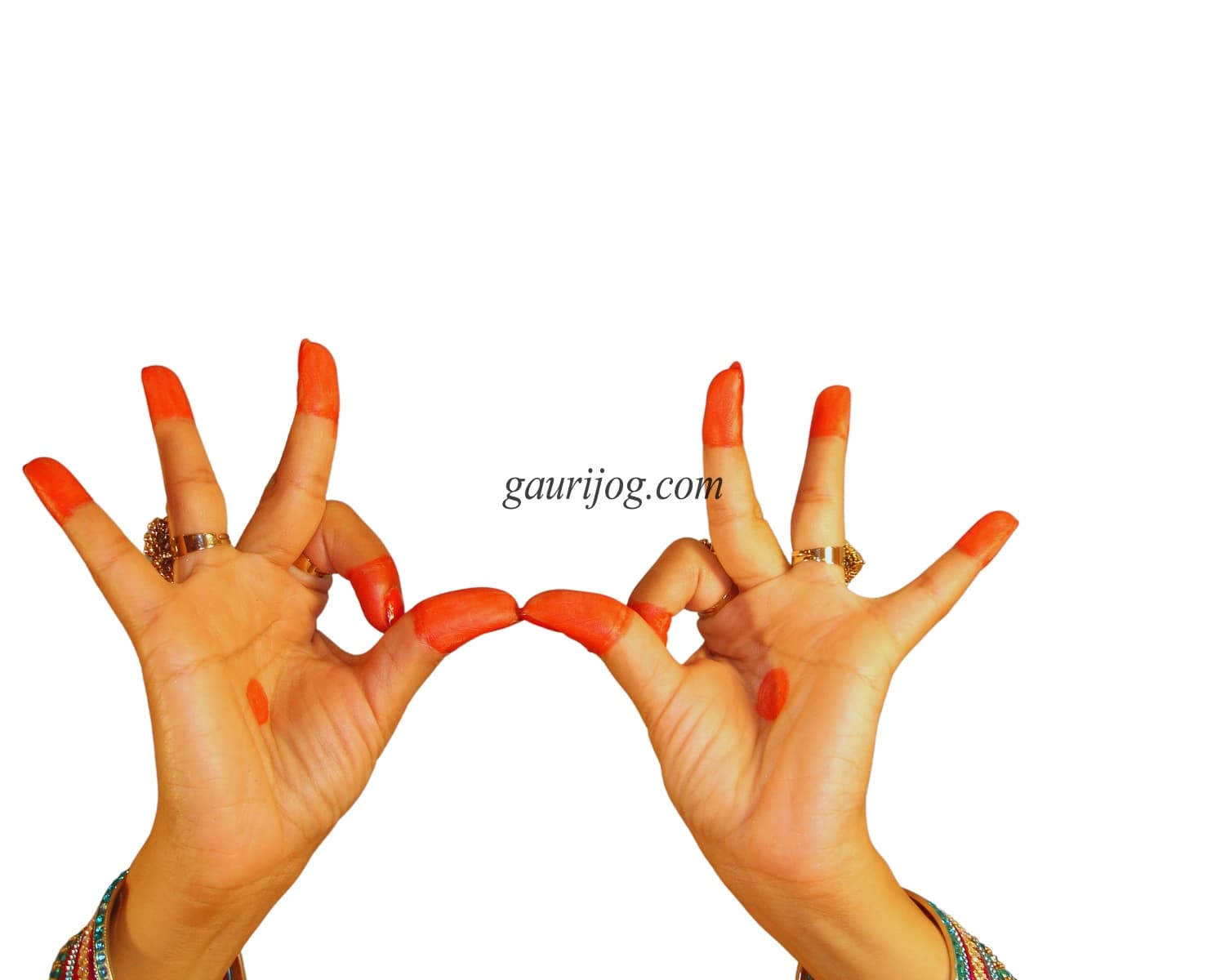
The palms are raised. The 2nd, 3rd and little fingers are stretched straight and the 1st finger; are bent and curved in half to touch the thumb and the thumbs arc slightly bent outwards to touch each other. This is used to show the gestures of Rakshasa (demons).
Shankh (shan-kah)
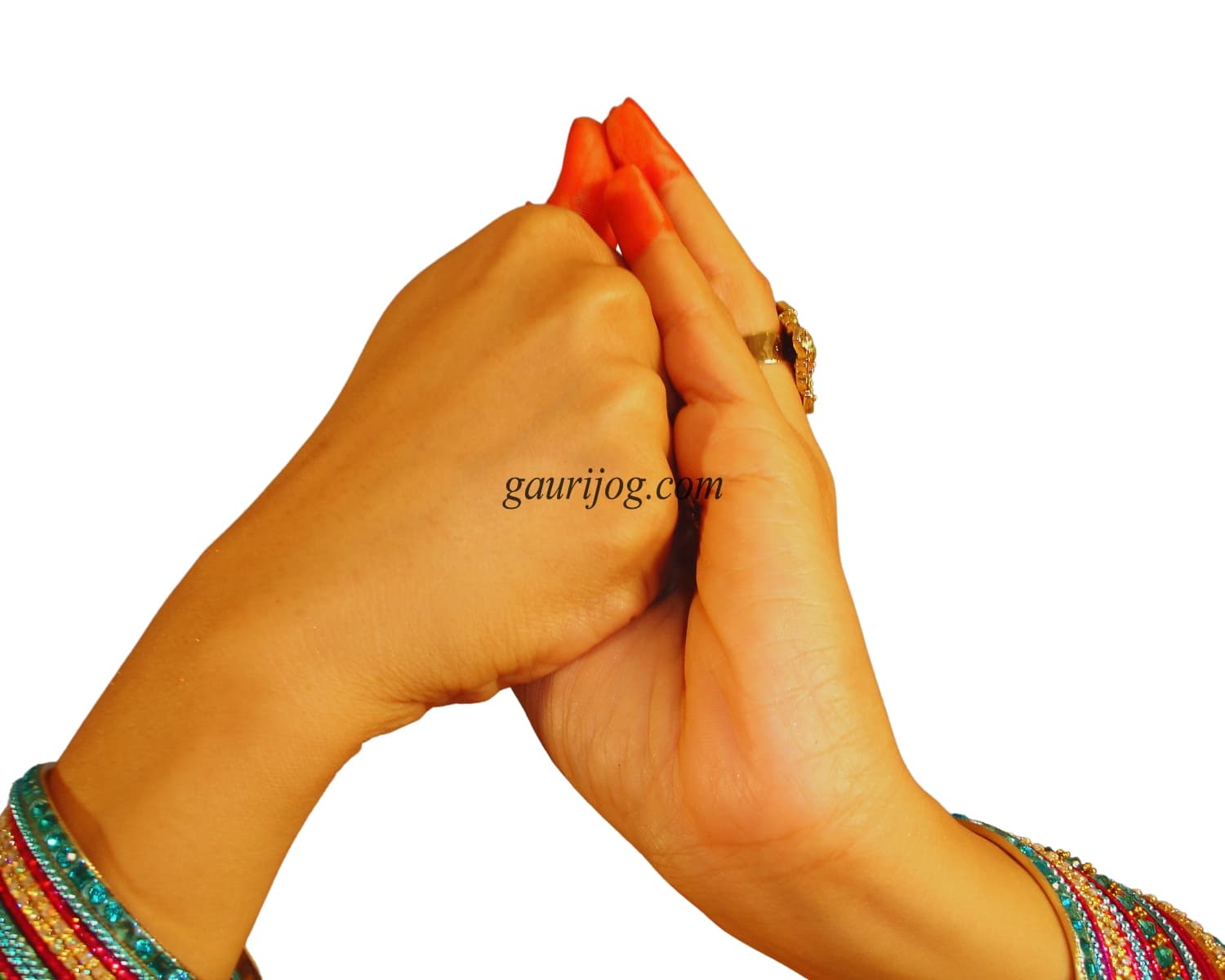
In this hasta mudra, there is combined use of the Shikhara Hast. Used to express Shankh (shell) or things like shell
Chakra (Cha-ka-ra)

Here there is combined use of the Pataka hand slightly modified as if to clap. This is used to express Chakra (weapon of Lord Vishnu)
Samput (Saam-poo-tah)

Here there is a slight deviation and modification of the Chakra Hast. It is the same as Chakra Hast except that the 1st, 2nd and the 3rd fingers are slightly bent instead of being stretched straight. Used to cover things and to show the sacred box in which the idols are places, to give somebody a gift, shuffle the dice
Pash (Pah-sha)

The 2nd, 3rd and little fingers are bent into the palm and the 1st finger is bent and interlaced with the 1st finger of the other. In the other hand, 2nd finger is slightly bent and the 3rd and 4th fingers are bent into the palm. This is used to show playful quarrel, chains, rope
Kilaka (Key-la-kah)

In this hasta Mudra, the palms are raised. The little fingers are extended straight with the 1st, 2nd and 3rd fingertips touch the center of the palm. Hands are crossed at the wrists facing in opposite directions and the extended little fingers are interlocked. Used to show affection, conversation of intimate friends and lovers
Matsya (Mat-sya)

The open palm of the right hand faces outward and the four fingers and the thumb arc extended but the thumb instead of being placed beside the other fingers as in Pataka is spread apart.
The left hand with the palm facing down is placed over the right hand so that the fingers of each hand point in the same direction. Used to show fish and also one of the “avatars” from Vishnu’s ten incarnations.
Kurmah (Koor-mah)
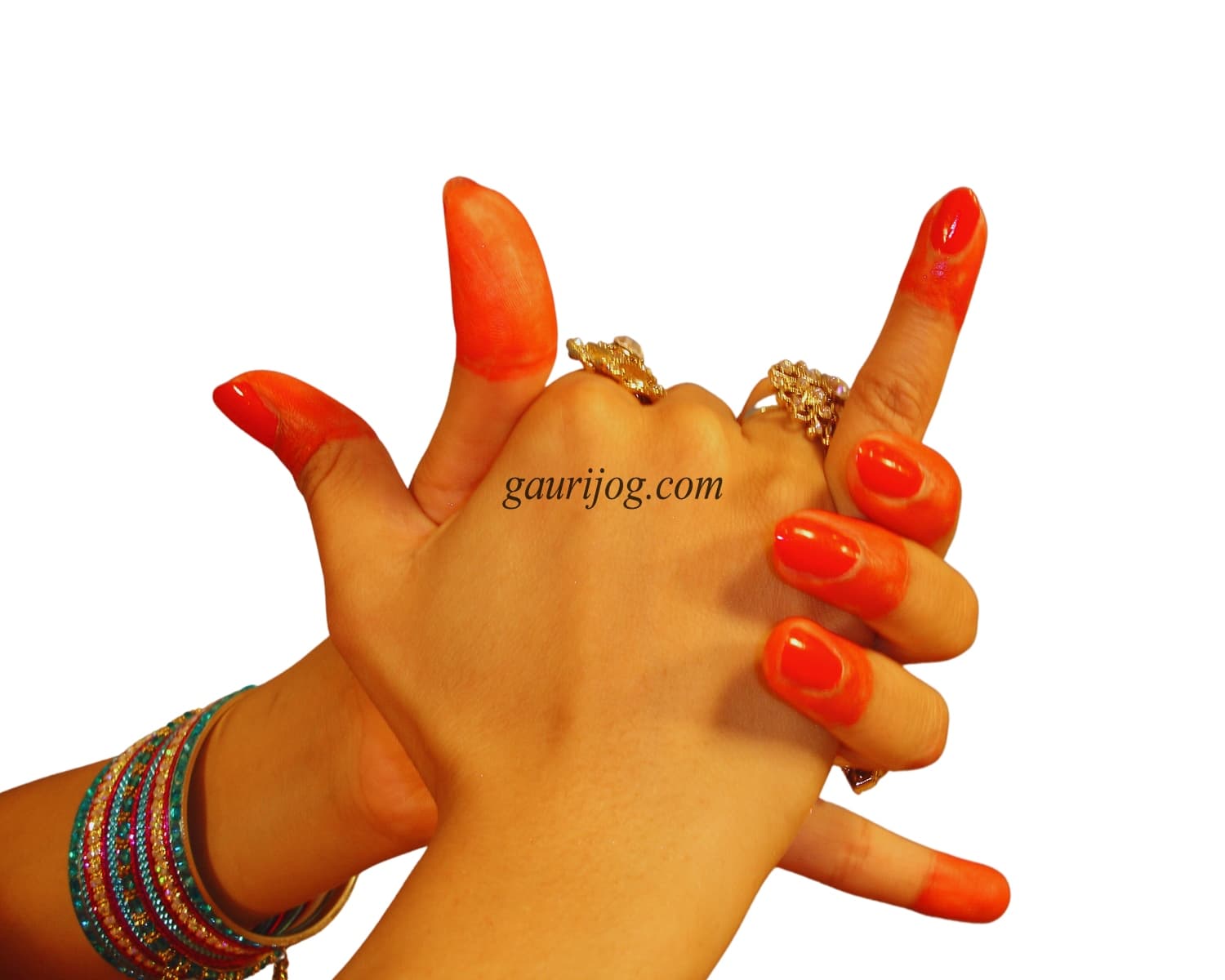
The hands are clasped together with the palms touching and the 1st, 2nd and 3rd fingers of each hand are bent over to touch the back of the other hand. The thumbs and the little fingers are stretched. Used to show tortoise and also one of the “avatars” from Vishnu’s ten incarnations.
Varaha (Vah-rah-ha)

The palms are bent down. 1st, 2nd and 3rd fingers of one hand overlap 2nd, 3rd and 4th finger of the other hand. The thumbs are stretched outwards. The little fingers are extended “straight. Used to show wild boar.
Garuda (Ga-rooh-dah)

The hands are raised with palms facing outwards. The four fingers are stretched and the thumbs are extended away from the rest of the fingers. The hands are then crossed at the wrists and the thumbs are interlocked. The palms of the hands face inwards. Used to show Eagle.
Khatva (Kat-vah)

The open palms are held facing outwards, the 1st, 2nd and 3rd fingers and the thumb are held closely together and the little fingers are stretched straight downwards. The hands are slowly moved to and fro with grace at the elbows. Used to express bed, crib for the baby or “Palkhi” (a carrier to carry people).
Bherund (Bay-rune-dah)

Similar to Bhramara except that the first and little fingers are bent and come closer to the thumb. Used to express bird couple.
For information regarding Single Hand Mudra (Single Hand Hasta Mudra) can be found here.
